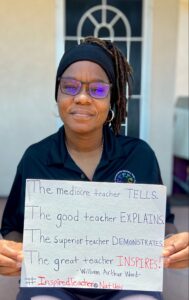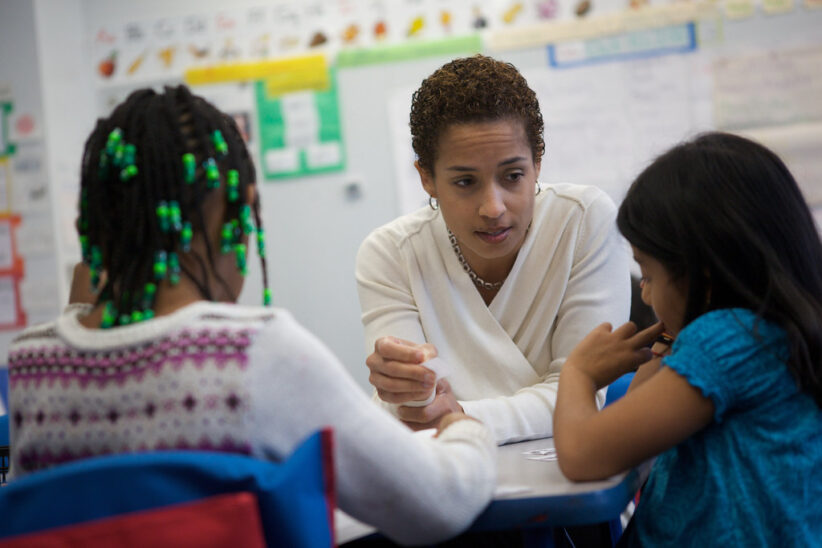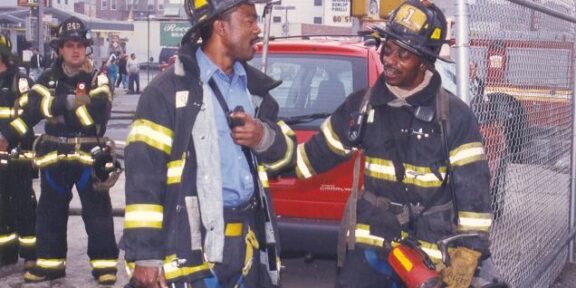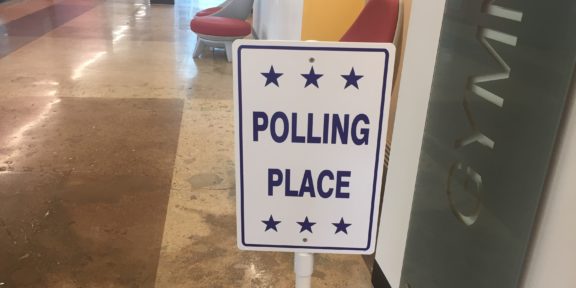WASHINGTON — Educators across the nation are still adjusting to life back in the classroom after nearly 18 months of remote learning due to the coronavirus pandemic.
Tracey Payton, dean of Students at Leckie Elementary School in Washington, D.C., said coming back to class has been quite the adjustment, but reuniting with students and staff makes it worthwhile.
“It’s a new normal,” Payton said, “but there’s no feat that is unreachable. Our focus is making sure the kids are staying safe and on target for where they need to be.”
As they go about new academic challenges brought on by the long absence from in-person learning, educators are constantly mindful of the dangers of teaching face-to-face during the pandemic.
In Memphis, for example, a charter school student, an elementary school teacher and a teaching assistant have died from covid-19 since school began.
In the six weeks the Palmdale (Calif.) District has been in session, Saundra Whigham, a middle school teacher, said her students have been sent home to quarantine twice after being exposed to coronavirus in the classroom.
“I don’t feel safe,” Whigham. “I don’t want to be sent home for 10 days over and over again.”

Ashley Bell, an eighth grade math teacher at Haynesville Middle School in Alabama, said teachers are constantly mindful of the disease.
“It’s our responsibility to make sure the children are safe as well as learning,” she said.
Educators said although the rising case numbers, new variants, mask mandates and vaccination requirements have been a major focus in this transition period, their biggest challenge is gauging the impact online learning has had on their student’s academic progression.
“The sixth graders came into school this year and they were third or fourth graders when they left,” Whigham said. “So, we’re basically re-teaching them how to be in school. You feel like you’re a teacher, a counselor, a coach, a life coach.”
Brenda Mitchell, a paraprofessional of over 15 years in the San Diego Unified School District, said that students lost a lot of structure in their time away from the classroom.
“Pre-covid, there was progress going, but that progress seems to have gone away,” Mitchell said. “So, the major concern is if we’ll be able to move them along to the next level.”
“When you come to school, there are set expectations, but not everyone had that in their home. In the population I work with, the students have mild to severe needs. So, they were not able to operate computers like those in general education settings. Getting students and their parents engaged was just really difficult.”
Whigham, who has been a teacher for 25 years, expressed similar difficulties.

“Their attention span just wasn’t there, and they weren’t getting their work in and us teachers just had no control over it,” Whigham said. “The students weren’t required to turn their cameras on for privacy reasons, but when you’re just speaking at black screens, you don’t know if they’re actually listening to you or if they’re even there.”
Whigham and Mitchell said they believe that a major issue lies in their respective school district’s failure to fully address the learning gaps at hand.
“I don’t think they’re trying to adjust the gaps, but just pick up where we left off and we can’t do that because there’s been some loss,” Whigham. “There has to be some kind of makeup effort or intensive programs,”
Bell said the return to in-person learning in Haynesville, Alabama, has been successful thus far, thanks to the enrichment classes the Lowndes County School District requires to bring students up to speed.
“We have tests in place to see where students are individually, as well as a whole so we can take the necessary steps to catch them up,” she said. “It may take a year or even two to really get it back to where it needs to be, even more, but the intervention classes are really needed.”
Even though the enrichment courses are a great help, navigating the students’ varying academic progress is still difficult, Bell said.
“I have to go back a grade level or two just to catch them up,” she said. “I have to reach all of them and be able to teach all those levels at one time. But you have to get everybody because you don’t want to miss anybody.”
Another large concern shared among all three educators was the lack of parent involvement in their student’s school life both online and in-person.
“My biggest concern is the students who are not meeting their full potential because of the lack of support,” Mitchell said. “If we could get parents to be in partnership with us, we can really continue. It might not be what it was, but it could be something different, even better.”
Bell agreed.
“We can teach our butts off, but it’s not just up to us,” she said. “It’s on the parents too,” They’re only at school for eight hours and they need to see the learning material outside of that. It’s going to take a lot more than just eight hours of learning to get it.”
Mitchell, president of the Paraeducator Union, said that she and other paraprofessionals in the San Diego district were exhausted by the mental pressures that have come along during this readjustment period.
Bell said it is the same among her colleagues in Haynesville.
“I stay up a lot later planning and making sure my lessons are sufficient enough for my students to understand. It’s a lot of work, but I would not trade it for anything.”







